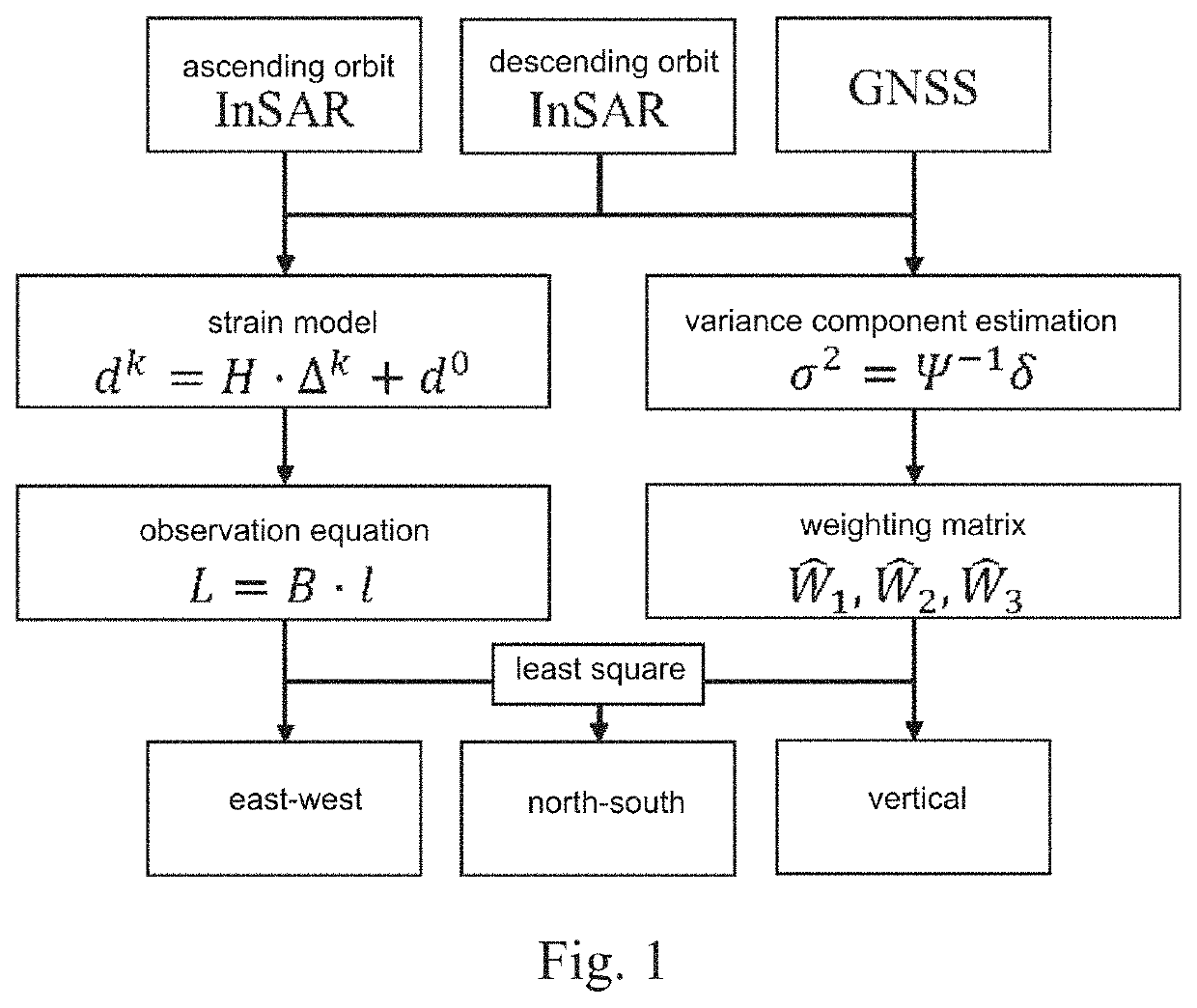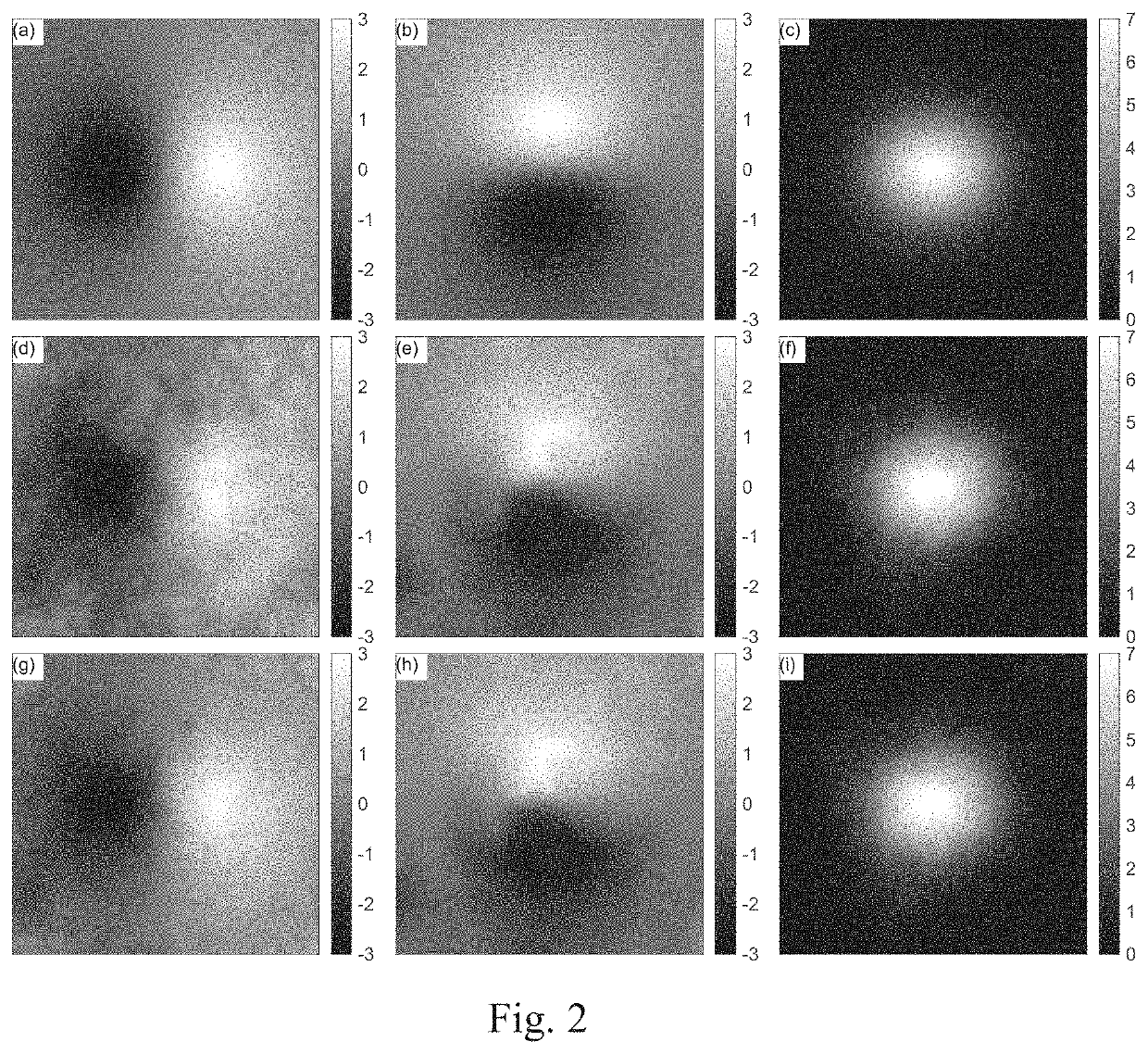InSAR and GNSS weighting method for three-dimensional surface deformation estimation
a three-dimensional surface deformation and weighting method technology, applied in the field of geodetic surveying, can solve the problems of difficult to accurately estimate the prior variance information of various observations, limited weighting accuracy thereof, and method is difficult to reflect influence, etc., to achieve accurate estimation, accurate insar/gnss weight ratio, accurate effect of weight ratio
- Summary
- Abstract
- Description
- Claims
- Application Information
AI Technical Summary
Benefits of technology
Problems solved by technology
Method used
Image
Examples
embodiment 1
[0050]Referring to FIG. 1 the embodiment 1 is described as follows.
[0051]Step 1: establishing a functional relationship between three-dimensional deformation d0 of an unknown point and a certain amount of InSAR / GNSS data Li of surrounding points by using ascending and descending orbit InSAR data and GNSS data based on a strain model;
[0052]wherein how to determine a quantity of the InSAR / GNSS data used to establish the functional relationship will be described in step 2.
[0053]Assuming that a three-dimensional coordinate and a three-dimensional deformation of the unknown point P0 are x0=[xe0 xn0 xn0]T and d0=[de0 dn0 dn0]T, and a three-dimensional coordinate and a three-dimensional deformation of a surrounding point Pk are xk=[xek xnk xnk]T and dk=[dek dnk dnk]T, then a following equation can be obtained according to the strain model:
dk=H·Δk+d0 (1)
[0054]wherein Δk=xk−x0=[Δxek Δxnk Δxnk]T. H is an unknown parameter matrix of the stress-strain model, which can be expressed as:
H=[ξeeξen...
embodiment 2
[0083]The embodiment 2 verifies the present invention through an experiment, as shown in FIG. 2-3. Referring to FIG. 2, (a)-(c) are the original simulated east-west, north-south and vertical deformation; (d)-(f) are east-west, north-south and vertical deformation data obtained by a conventional method: and (g)-(i) are east-west, north-south and vertical deformation data obtained by the method of the present invention (unit: cm). Referring to FIG. 3, (a) is the ascending orbit InSAR data, and (b) is the descending orbit InSAR data, wherein triangles in FIG. 3 represent location distribution of the GNSS sites (unit: cm).
[0084]Simulation data description: (1) simulating the three-dimensional deformation field in east-west, north-south and vertical directions in a certain area (image size 400×450) (as shown in FIG. 2, (a)-(c)); (2) combining imaging geometry of sentinel-1A / B satellite data to calculate the ascending and descending InSAR deformation results, wherein the incident angle an...
PUM
 Login to View More
Login to View More Abstract
Description
Claims
Application Information
 Login to View More
Login to View More - R&D
- Intellectual Property
- Life Sciences
- Materials
- Tech Scout
- Unparalleled Data Quality
- Higher Quality Content
- 60% Fewer Hallucinations
Browse by: Latest US Patents, China's latest patents, Technical Efficacy Thesaurus, Application Domain, Technology Topic, Popular Technical Reports.
© 2025 PatSnap. All rights reserved.Legal|Privacy policy|Modern Slavery Act Transparency Statement|Sitemap|About US| Contact US: help@patsnap.com



